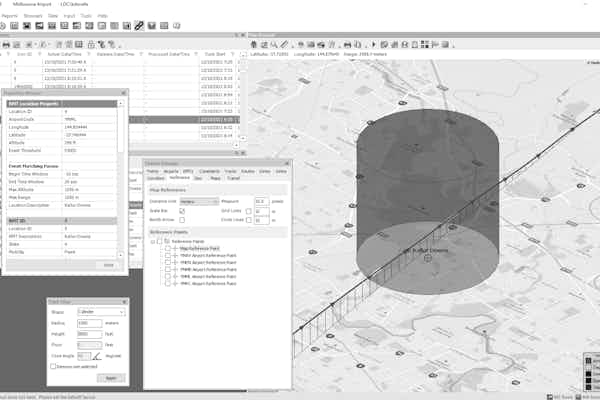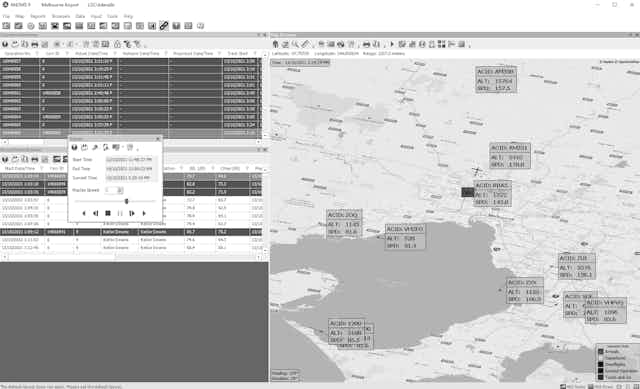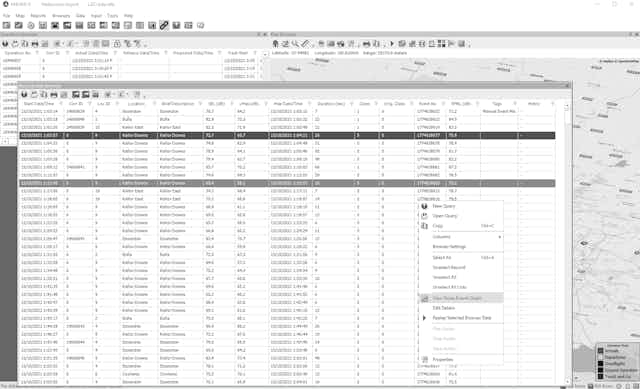
ANOMS ANEEM
A proprietary algorithm that accurately measures aircraft noise exposure in the community and determines your airport’s contribution.

Overview
Airports are often blamed for noise exposure events caused by other sources
Communities want airport noise exposure measured near them even when aircraft noise levels are close to background levels where standard approaches to detection are not effective. Errors from failing to detect noise from aircrafts passing a location or reporting excessive aircraft noise exposure damages community trust that engagement plans aim to build.
ANOMS ANEEM provides the data that airports need to more accurately measure their noise contribution and aircraft noise exposure.
Platform features
Identify aircraft noise exposure from other background noise in the community
Communities can misinterpret noise exposure that airports report when aircraft noise and the background is not adequately identified or isolated.
ANOMS ANEEM provides higher quality data for environmental noise reporting compared to traditional noise threshold-based methods. Our product can determine whether an aircraft is the dominant source or a contributing source of a noise event, or whether the event is dominated by other noise sources.
Differentiate other sources from aircraft noise exposure
Isolate aircraft noise from irregular background community noise levels to measure contribution to noise in the community with more accuracy.
Adapts to changing conditions
ANEEM is a fully adaptive process that removes the need to continually evaluate noise monitor performance and reconfigure instrument settings.
Support airport noise mitigation strategies
More accurate data from ANEEM reduces effort in checking and grooming event data, allowing noise offices to focus on other business activities.
High quality data to support noise monitoring activities
Deploy noise monitoring equipment in areas with varying background noise or areas where aircraft noise is close to background levels.
Inside the product
Support airport noise mitigation strategies with detailed data on community noise exposure
ANOMS ANEEM’s sophisticated algorithm can identify aircraft noise in challenging noise environments in communities.

Measure your airport’s contribution to community noise exposure
ANOMS ANEEM automatically considers the prevailing noise environment at the time aircraft are near the monitor and the available information about the aircraft.

Support airport noise mitigation strategies by focusing efforts in the right place
Determine if aircraft noise was the dominant source or a contributing source of a noise event.

Integrates with ANOMS airport noise monitoring and operations system
ANOMS embeds proven expertise in noise monitoring and abatement, stakeholder engagement, flight tracking and aircraft noise abatement procedure performance, and airport optimisation and expansion planning.

Customer service
We work directly with you to understand your airport's noise exposure
ANEEM is the genesis of decades of industry best practice and emerging research at the world’s most environmentally constrained airports.
We work directly with your airport to understand community noise exposure. We are dedicated to ensuring your team can tackle airport noise mitigation challenges around community annoyance and engagement with our world-leading software solutions.
FAQs
Using a floating threshold is a step up from fixed thresholds as it effectively varies the detection threshold based on continuously assessing background noise levels. It still requires the customer to correctly set a threshold which ANEEM doesn’t. If background levels have been high in the recent past, then a floating threshold takes time to lower the threshold level so may miss quieter aircraft noise levels. Similarly, if background levels suddenly increase, a floating threshold can take time to adapt and assigning other noise as aircraft noise. ANEEM detects when an aircraft may be causing noise and then looks to see whether it can see a peak in the noise levels that could have been generated by the aircraft. A floating threshold can also float down to very low levels that result in continuous generation of events. Effectively, meaning that whenever an aircraft is anywhere near the NMT, it can be correlated. It doesn’t offer the additional validation that ANEEM does to confirm that the noise level recorded was typical of the specific aircraft under the conditions of measurement. Where aircraft noise levels are approaching background noise levels this can lead to incorrect noise levels being assigned to aircraft movements.
No, ISO20906 does not mandate how events are generated and classified.
ISO20906 has requirements for what is included in an event. ANEEM provides the required information.
ISO20906 suggests using a threshold, minimum and maximum durations and staying below the detection level for a minimum fall time. ANEEM applies the threshold-based technique described by the standard to delineate candidate events that are evaluated.
The event delineation process is not run continuously. It is only run when aircraft are near the monitoring location. A set of candidate events are cycling through a series of threshold levels. ANEEM evaluates the candidates to determine the best fit, if any, for an aircraft event. No event is generated unless ANEEM has found a plausible aircraft event.
No, ANEEM only generates events for aircraft activity. The energy from other noise sources will be contained in the background noise measurements.
ANEEM is designed to improve the accuracy of the aircraft noise assessment. So, yes, it will change the results. The level of change will depend on how much manual grooming was being done previously and how good a monitoring location is. Depending on the environment that the monitoring is done in ANEEM may result in higher or lower levels of aircraft noise. But whichever way the data changes, aircraft noise levels will be more accurately reported with less manual grooming.
When monitoring has been done using other techniques, you may want to explain to the community why they should have more trust in the data from ANEEM. Appropriate strategies will depend on the sensitivity of the noise measurements at a location. The following engagement processes have been used:
- Use of ANEEM only at new portable monitoring locations, thus avoiding any apparent change in reported aircraft noise.
- Presenting the advantages of ANEEM versus standard event detection with examples of the improvements made. The Noise Event Workbench makes it easy to review the data for examples.
- Envirosuite has prepared comparisons at a few locations to show the advantages of ANEEM and characterise the improvements.
- External third-party report on the effectiveness of ANEEM.
- ANEEM does not produce community noise events. The community noise will be contained in the background noise levels.
The type of aircraft and what it is doing are key inputs into ANEEM. ANEEM will not function without track data. Of course, complete loss of radar data is rare. Furthermore, it should be noted that ANOMS is designed to adapt reporting to missing data. In the event of radar loss, all that is required is to flag periods that should be excluded. Envirosuite also recommends adding a suitable comment.
ANEEM will function without knowledge of the aircraft type. However, it will need to assume an aircraft type and performance will be degraded. While long periods of lost radar data are also rare, the airport may also choose to remove such periods from reporting to avoid distorting data.
ANEEM is designed for monitoring the noise levels from overflying aircraft only. It is not suitable for detecting noise from aircraft on the ground. Envirosuite has specialist algorithms that are designed for these potentially complex monitoring situations.
Catch up on the latest insights for all things ANEEM
about your aircraft noise exposure requirements.